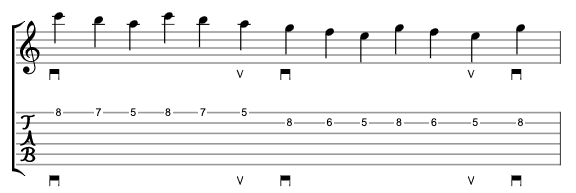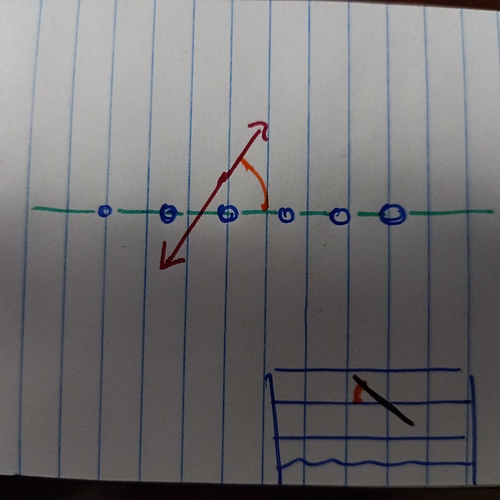Yes that happens to me as well. I find that it’s a razor’s edge that I’m on when I’m playing fast, and the moment that something tenses up everything locks. I wonder what other super players on here experience with that (pinging those I know of!) – @Philausopher, @Twangsta, @tommo, do you have any thoughts with that? When you’re going fast, or when you first started to get fast, did you feel that things were a house of cards? 
Below is a variation on an exercise/drill/experiment I’m doing lately which I’ve found super effective. I’m assuming you’ve been working on the relaxation drills from the vid I mentioned earlier, because it’s important for you to start to experience what close-to-zero tension feels like.
In summary, the experiment consists of playing something very slowly to observe what no tension feels like, and then playing medium tempo, and then fast, up and down in tempo as I see fit and as I get a sense of what zero tension feels like. Note that the “slow practice” does not mean “slow motion” – the movements are still fast, but the tempo is slow, if that makes sense (more notes here).
Take this 6-note-per-string fragment:

First, I play it mid tempo a few times, just to understand what the motions should be, more or less. I’m trying to stay totally loose during that. Then I might give it a few tries up to the speed I want. I almost immediately notice some weird tension, because I’m still working on my picking and string changes!
Then I play it quite slow, with roughly the same kinds of motions I use at speed. It’s kind of hard to use the identical technique, b/c speed brings its own technique, but try to keep the same hand alignment, motion sizes, etc. The point when playing this is to really pay attention to any tension anywhere (shoulders, arms, elbow, back, hands, whatever) and get rid of it – which should be easier at this slow tempo – and to pay attention to how everything feels (aka proprioception, which is your body’s “sixth sense” for tracking its own motion and location). I find that playing this softly helps minimize effort, so I can pay more attention to what’s going on internally.

When you feel you’ve got a good sense for how this works, speed it up, and see if you can carry that same sense of balanced ease and awareness you got at the slow speed into your faster playing:

Then crank it up again – and again, carry your relaxation and awareness into this, as much as you can. At higher speeds, I think that the “relaxation” changes in quality somewhat, due to the differences in playing speed, but I also think that we can still apply what we learned at the slower tempo to it. I have started to think “less effort, less effort” while playing fast:

I believe that Chopin used to tell his piano students, “simpler, simpler!” when they were playing tough material 
When playing at speed, use chunking etc to help group the notes, which simplifies your mental load (more on chunking here, and it’s in the CtC videos as well).
Note I usually set the metronome at some steady beat and then just play at quarter speed, half speed, and full speed, going back and forth with the speeds as I’m working it out, spending as much time as I need.
I’ve only recently started this exploration with picking and crosspicking – for crosspicking in particular it’s been very good, because holy smokes that is a delicate and demanding movement! But it feels good, for me. It’s not slow practice, it’s not fast practice, it’s a combination, and the slow practice lets you get into the feel of it.
Hope it helps! Give it a shot and see how/if it works for you. Cheers, jz








 I’ve tried probably every pick out there and I always fall back to them
I’ve tried probably every pick out there and I always fall back to them
 Though I have to admit when I play my acoustic ( firewood compared to what you’re playing ) I tend to use the Kozik 1.0 Tortex picks, if you haven’t tried them you should, great blues & country tone on there. That’s what I used for years before the purps. I think the super light gauge I’m into now 8-46, the purps are best.
Though I have to admit when I play my acoustic ( firewood compared to what you’re playing ) I tend to use the Kozik 1.0 Tortex picks, if you haven’t tried them you should, great blues & country tone on there. That’s what I used for years before the purps. I think the super light gauge I’m into now 8-46, the purps are best.


 ), etc. You need to find what works for you naturally and fast NOW, unless you are happy to spend months/years learning an other motion.
), etc. You need to find what works for you naturally and fast NOW, unless you are happy to spend months/years learning an other motion.